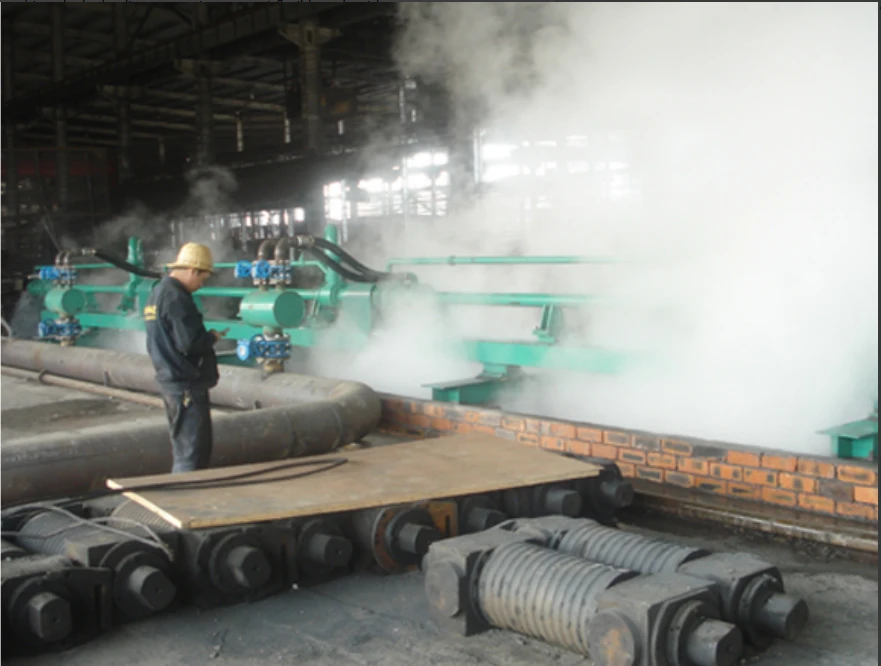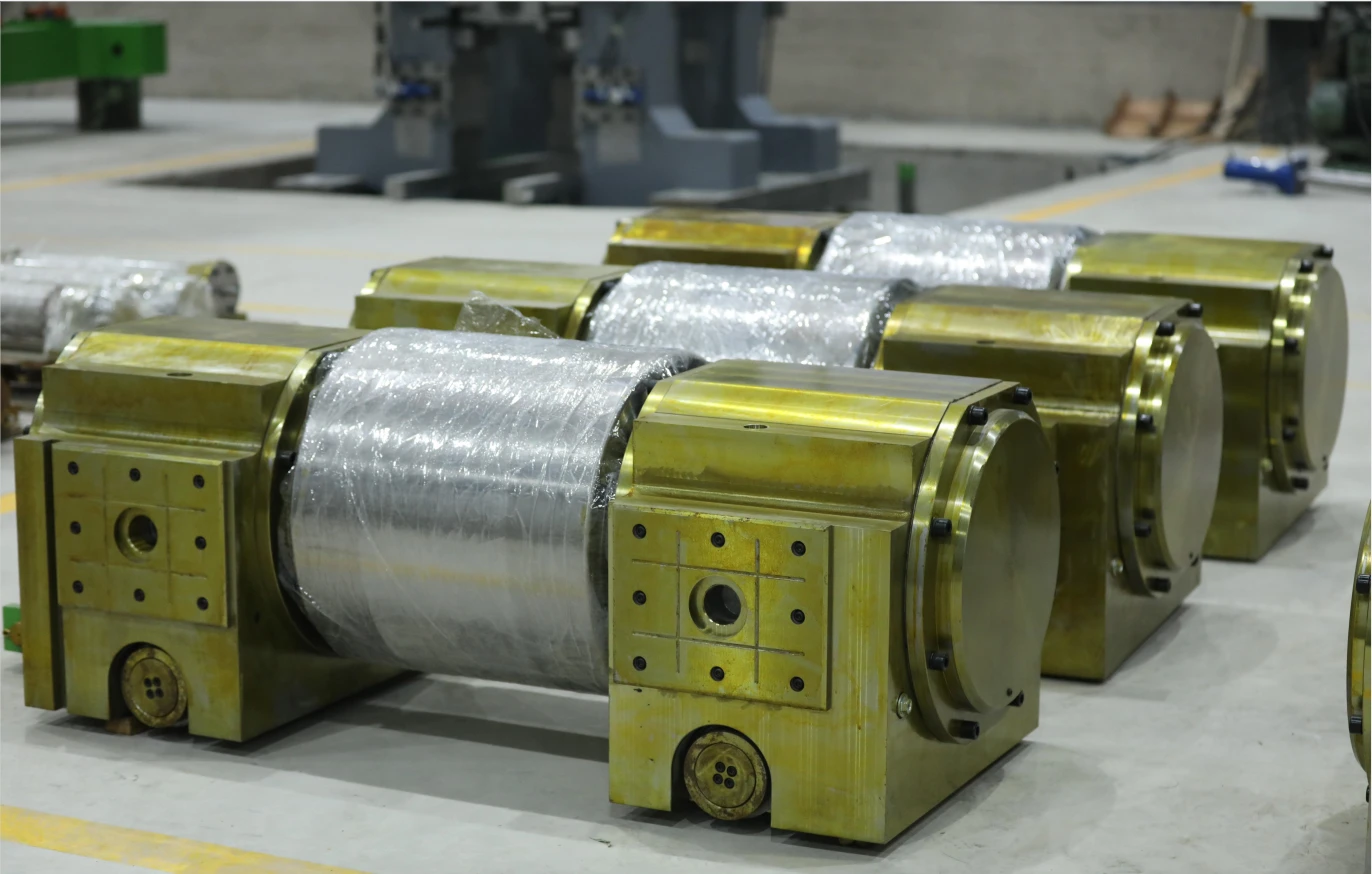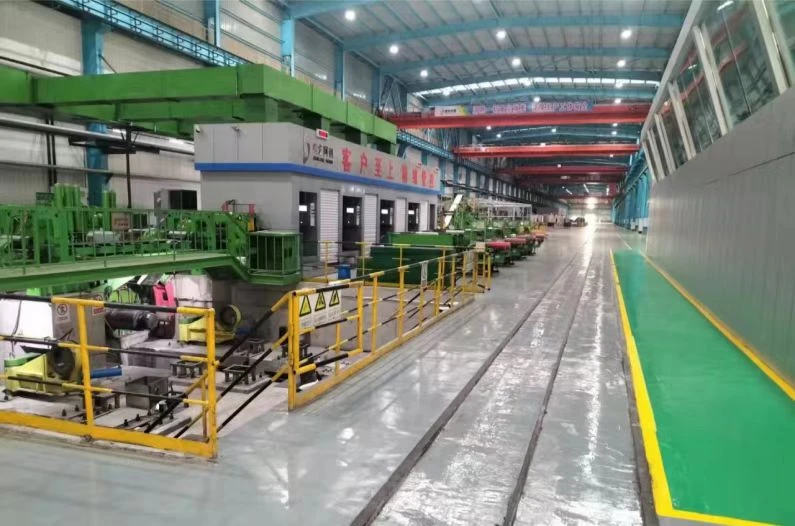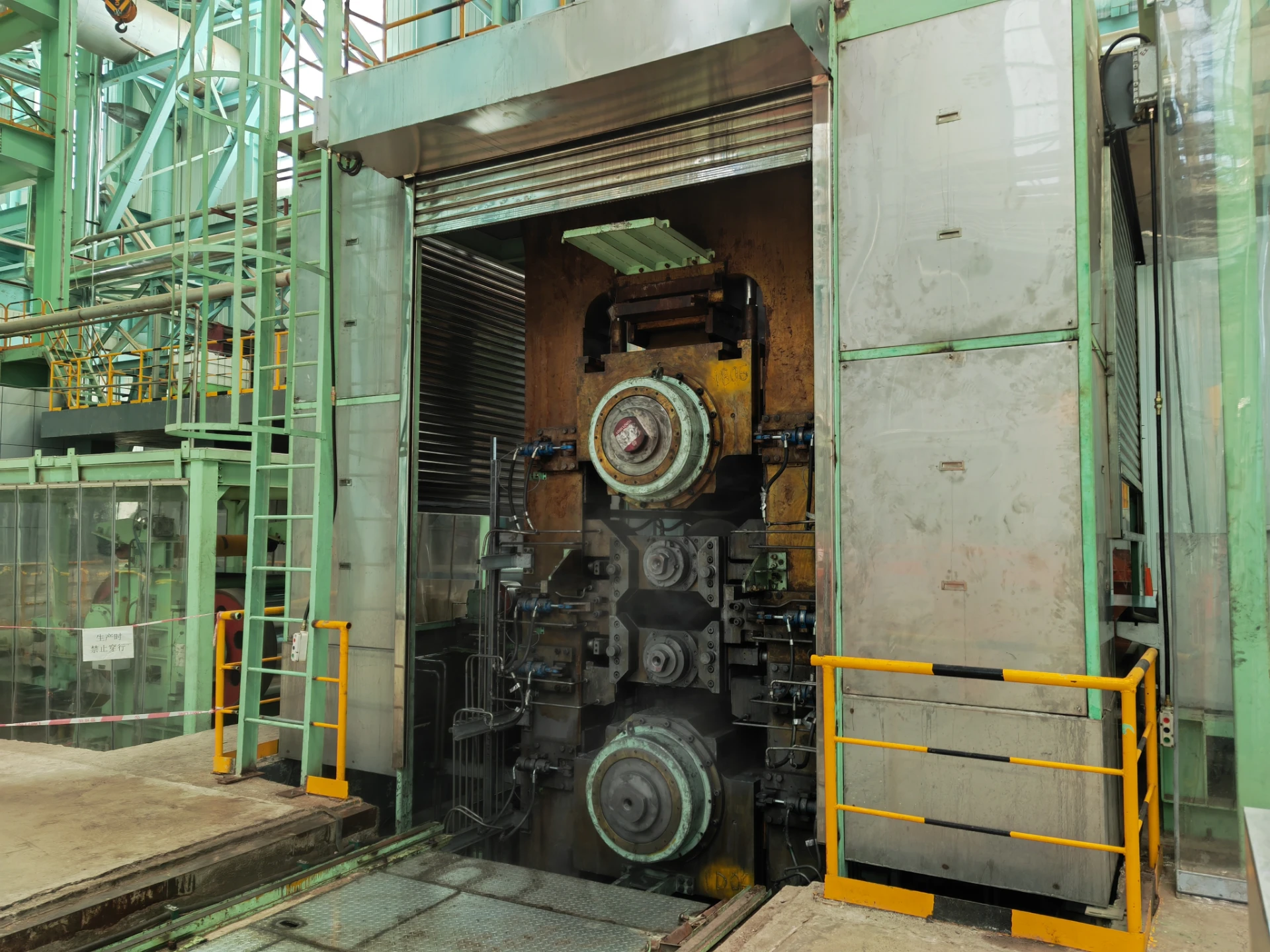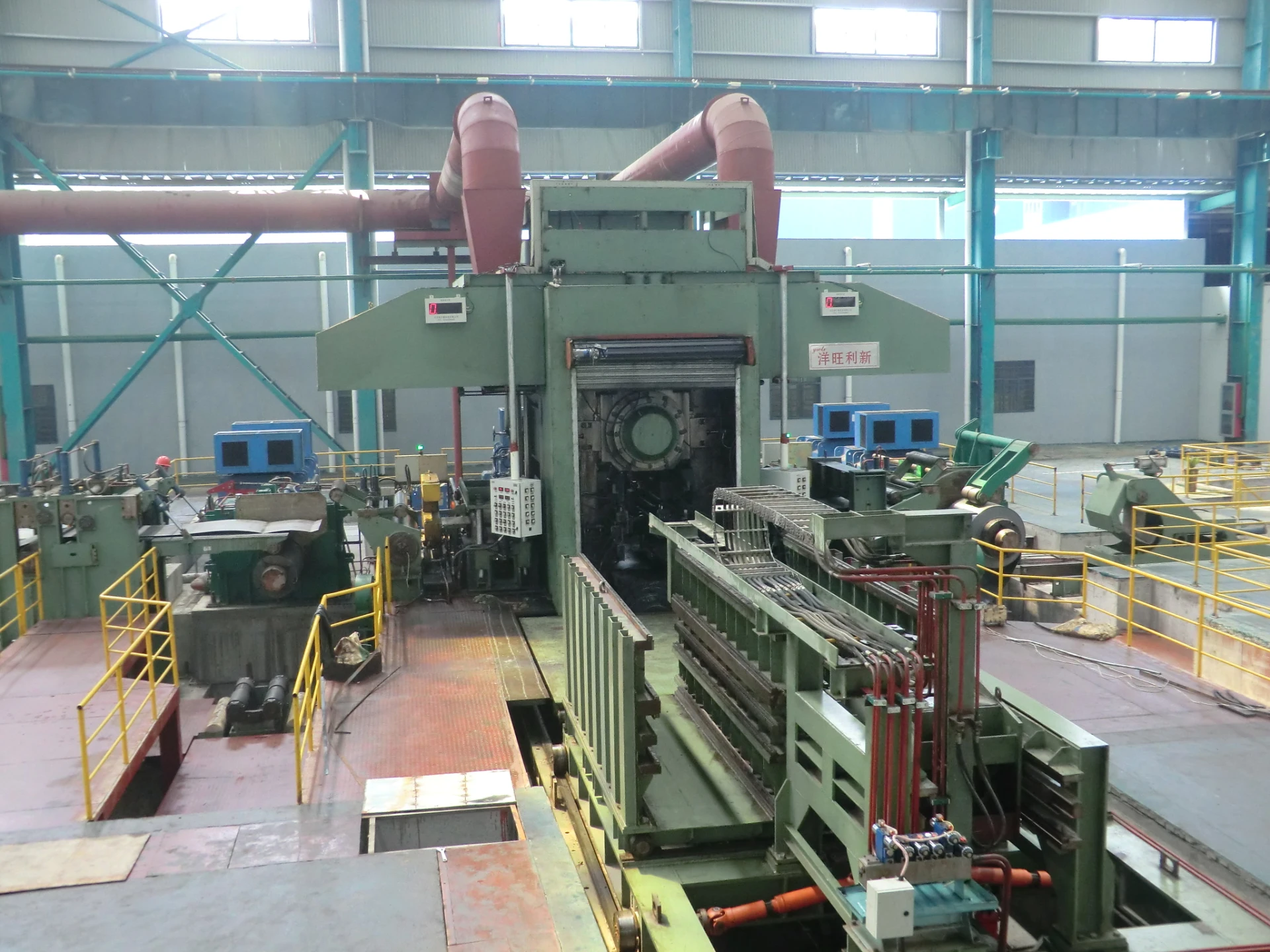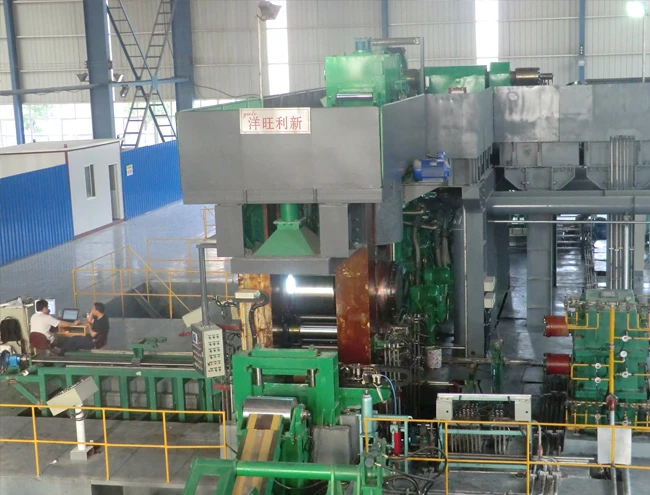
Cladding Rolling Mill: Durable, Corrosion-Resistant Metal Solutions
Mastering Advanced Material Solutions: The Power of roll bonding cladding
In the rapidly evolving landscape of industrial materials, the demand for advanced solutions that offer superior performance under extreme conditions is paramount. Traditional monolithic materials often fall short in balancing properties such as corrosion resistance, high strength, and cost-effectiveness. This is where roll bonding cladding emerges as a transformative technology. It involves metallurgically bonding two or more dissimilar metals, creating a composite material that leverages the best attributes of each component. This process is critical in numerous high-stakes applications, delivering unparalleled durability and efficiency.
Our expertise in this domain, particularly with our advanced Cladding Rolling Mill, positions us at the forefront of providing bespoke material solutions. This article delves into the intricate details of roll bonding cladding, exploring its manufacturing intricacies, technical advantages, diverse applications, and the critical role it plays in modern industrial progress, setting new benchmarks for material science and engineering.
The Intricate Process of Roll Bonding Cladding: From Concept to Composite
The manufacturing process of roll bonding cladding is a sophisticated metallurgical technique designed to create bimetallic or multi-metallic sheets and plates with exceptional bond strength and integrity. This process typically begins with the careful selection of base and cladding materials, which can range from carbon steels, stainless steels, and nickel alloys to titanium and copper, chosen based on the intended application's demands for properties like corrosion resistance, wear resistance, or thermal conductivity. Precise surface preparation is critical, often involving degreasing, pickling, and brushing, to ensure optimal metallic bonding and prevent defects at the interface.
Following preparation, the materials are stacked and heated, often to high temperatures approaching their recrystallization point, which facilitates plastic deformation and diffusion bonding during the rolling stage. This heating phase is particularly crucial in hot roll bonding cladding, where elevated temperatures enhance atomic diffusion across the interface, forming a robust metallurgical bond. The heated stack then passes through a rolling mill under significant pressure, causing plastic deformation and reducing the thickness of the composite. The intense pressure and deformation, combined with temperature, lead to a strong, inseparable bond between the layers, effectively creating a single, integrated material with combined properties. Post-rolling processes include annealing, flattening, and various quality control inspections to ensure the final product meets stringent industry standards such as ISO 9001, ASTM, and ASME, guaranteeing a long service life and reliable performance in demanding environments like petrochemical, power generation, and water treatment industries.
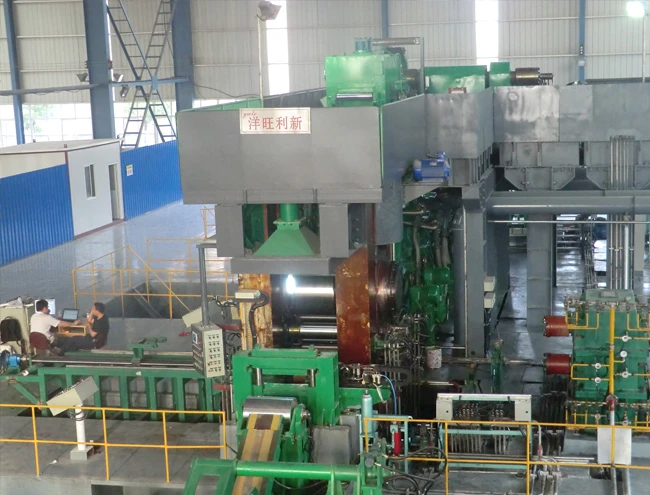
Figure 1: Illustration of a typical Roll Bonding Cladding process.
The finished product, whether it's a clad plate or designed for specialized applications like clad pipe welding, offers a unique blend of properties. For instance, a stainless steel clad carbon steel plate provides the corrosion resistance of stainless steel at a lower cost than solid stainless steel, while maintaining the structural integrity of carbon steel. This hybrid approach significantly extends component lifespan, reduces maintenance costs, and often leads to considerable energy savings by optimizing material usage and performance.
Key Technical Parameters for Optimized Roll Bonding Cladding Performance
Understanding the critical technical parameters is essential for specifying and manufacturing high-quality roll bonding cladding materials. These parameters directly influence the bond strength, overall performance, and suitability for specific applications. Our Cladding Rolling Mill is engineered to precisely control these variables, ensuring optimal outcomes.
| Parameter | Description | Typical Range/Value |
|---|---|---|
| Clad Layer Thickness Ratio | Proportion of cladding material to base material thickness. | 5% to 50% (Customizable) |
| Bond Strength (Shear Strength) | Resistance to shearing at the interface, critical for structural integrity. | Typically > 200 MPa (ASTM A263/A264/A265 standards) |
| Bond Zone Quality | Absence of voids, oxides, or unbonded areas at the interface. | 100% Ultrasonic Inspection Conformity |
| Overall Plate/Pipe Dimensions | Max width, length, and total thickness. | Width up to 4000mm, Length up to 12000mm, Thickness up to 100mm |
| Operating Temperature Range | Temperature limits for reliable performance without delamination. | -196°C to 800°C (Material Dependent) |
| Corrosion Resistance | Ability to withstand corrosive environments, depending on cladding material. | Per ASTM G48, G28 (Pitting, Crevice Corrosion) |
These parameters are meticulously controlled throughout the hot roll bonding cladding process, from initial material selection and surface preparation to the final rolling and post-processing treatments. Adherence to these specifications guarantees the superior quality and longevity of clad products, making them suitable for the most challenging industrial applications.
Diverse Applications and Strategic Advantages of Roll Bonding Cladding
The versatility and enhanced performance offered by roll bonding cladding make it an indispensable solution across a multitude of heavy industries. Its primary advantage lies in providing superior material properties at a fraction of the cost of solid alloys, achieving an optimal balance between performance and economic viability. This technology is particularly beneficial in applications requiring high corrosion resistance, exceptional wear characteristics, or specific thermal properties that a single metal cannot efficiently provide.
- ✓ Petrochemical & Chemical Processing: Clad materials are extensively used for pressure vessels, heat exchangers, and storage tanks handling corrosive media. The combination of carbon steel for strength and stainless steel or nickel alloys for corrosion resistance significantly extends equipment life and enhances safety.
- ✓ Power Generation: In nuclear and thermal power plants, clad components, especially those involving hot roll bonding cladding techniques, are employed in condensers, piping, and FGD (Flue Gas Desulfurization) systems, where resistance to aggressive fluids and high temperatures is critical for sustained operation and energy efficiency.
- ✓ Shipbuilding & Marine Engineering: For offshore platforms, naval vessels, and desalination plants, clad plates and pipes offer excellent resistance to saltwater corrosion, ensuring the longevity and structural integrity of critical components. This also includes specialized applications like clad pipe welding for robust pipelines.
- ✓ Metallurgy & Non-ferrous Metals: In electrolytic processes and high-temperature furnaces, clad materials provide durable linings and components, enduring harsh chemical and thermal stresses while reducing overall material costs.
- ✓ Water Supply & Drainage: Large diameter pipelines and reservoirs benefit from clad materials for their resistance to water corrosion and microbial growth, ensuring long-term infrastructure reliability.
- ✓ Cryogenic Applications: Certain clad combinations can be engineered to perform exceptionally well at extremely low temperatures, maintaining ductility and strength where other materials become brittle.
The strategic advantages of roll bonding cladding extend beyond mere material performance. It facilitates significant cost savings due to reduced material consumption of expensive alloys, lowers maintenance needs through extended service life, and contributes to greater energy efficiency by reducing the energy expenditure associated with frequent replacements or repairs. This makes it a preferred choice for B2B decision-makers seeking sustainable and economically viable solutions.
Our Cladding Rolling Mill: Precision Engineering for Superior Roll Bonding Cladding
As a leading provider of advanced material processing equipment, our Cladding Rolling Mill represents the pinnacle of engineering for roll bonding cladding applications. Designed with robust mechanics and sophisticated control systems, this mill facilitates the precise and efficient production of high-quality clad materials, meeting the most rigorous industrial demands. Our machines are built to handle a wide range of material combinations, from common stainless steel/carbon steel clads to more exotic combinations involving titanium, nickel, and copper alloys.
Key features of our Cladding Rolling Mill include high-precision rolling stands, advanced heating capabilities for optimal bonding temperatures (crucial for hot roll bonding cladding), and automated process controls that ensure consistent thickness, flatness, and bond integrity across the entire length of the clad product. The mill's modular design allows for flexible configurations, adapting to various production scales and specific client requirements. Its robust construction ensures long-term operational stability and minimal downtime, contributing to higher productivity and lower operational costs for our clients.
We don't just supply equipment; we offer comprehensive solutions. Our team provides expert consultation on optimal material pairings, process parameters, and post-processing techniques, including guidance on effective clad pipe welding procedures. This holistic approach ensures that our clients not only acquire top-tier machinery but also gain a strategic partner dedicated to maximizing their production efficiency and product quality in the competitive materials market.
Ensuring Excellence: Quality Assurance, Certifications, and Customer Trust
Our commitment to quality and reliability is the cornerstone of our operations, particularly in the realm of roll bonding cladding. We adhere to the most stringent international standards and certifications, providing our clients with the assurance that every product and service meets the highest benchmarks of quality, safety, and performance. Our manufacturing processes, from material sourcing to final inspection, are governed by an ISO 9001 certified quality management system.
- ✓ Rigorous Testing: All clad products undergo comprehensive non-destructive testing, including ultrasonic inspection (conforming to ASTM A578, JIS G0801, or equivalent), dye penetrant inspection, and radiographic testing to detect any internal defects or delaminations.
- ✓ Mechanical and Chemical Analysis: Destructive tests such as shear strength tests (ASTM A263/A264/A265), tensile tests, bend tests, and chemical composition analysis are performed to verify material properties and bond integrity.
- ✓ Industry Certifications: Our products and processes comply with major international standards like ASME Boiler and Pressure Vessel Code, API (American Petroleum Institute), and various national standards, validating their suitability for critical applications in petrochemical, oil & gas, and power industries. Our operational tenure of over 20 years in specialized equipment manufacturing further attests to our established authority in the field.
- ✓ Customer Feedback & Case Studies: We continuously integrate feedback from our global clientele, which includes major engineering contractors and material suppliers, into our R&D. Our extensive portfolio of successful projects, ranging from providing equipment for a large-scale chemical plant in the Middle East to a specialized hot roll bonding cladding solution for a renewable energy project in Europe, demonstrates our practical experience and proven track record.
This meticulous approach to quality, coupled with transparent documentation and a history of successful deployments, builds profound trust with our B2B partners, reinforcing our position as a reliable and authoritative leader in advanced material processing technology.
Frequently Asked Questions (FAQ) about Roll Bonding Cladding
Q1: What are the primary advantages of roll bonding cladding over solid alloys?
A1: The main advantages include significant cost reduction by using a less expensive base material with a thin layer of high-performance alloy, improved corrosion or wear resistance tailored to specific needs, enhanced structural integrity due to the robust metallurgical bond, and excellent formability, allowing for complex fabrications. It effectively combines the strength of one metal with the desired surface properties of another.
Q2: Can different material combinations be processed with your Cladding Rolling Mill?
A2: Absolutely. Our Cladding Rolling Mill is designed for exceptional versatility. It can effectively bond a wide array of material combinations, including but not limited to stainless steel (300/400 series) to carbon steel, nickel and nickel alloys (e.g., Inconel, Monel, Hastelloy) to carbon steel, copper/copper alloys to carbon steel, and titanium to steel. The specific parameters for hot roll bonding cladding are adjusted based on the material properties to ensure optimum bond quality.
Q3: What quality control measures are in place for roll bonding cladding products?
A3: We employ a multi-stage quality control process. This includes strict incoming material inspection, in-process monitoring of temperature and pressure during rolling, and comprehensive post-production testing. Post-production tests include non-destructive tests like ultrasonic inspection for bond integrity and visual inspection, along with destructive tests such as shear strength, bend, and tensile tests. All adhere to international standards like ASTM, ASME, and ISO, ensuring superior quality for critical applications like clad pipe welding.
Q4: What is the typical lead time for Cladding Rolling Mill orders and product delivery?
A4: Lead times for our Cladding Rolling Mill vary depending on the specific configuration and customization required, typically ranging from 12 to 24 weeks. For clad product orders, once material specifications are confirmed, production and delivery typically range from 4 to 8 weeks, depending on quantity and complexity. We maintain transparent communication throughout the process, providing regular updates on manufacturing progress and delivery schedules. Our global logistics network ensures efficient and timely worldwide delivery.
Comprehensive Support: Warranty, After-Sales Service, and Custom Solutions
Our commitment to our clients extends far beyond the point of sale. We provide comprehensive support throughout the entire lifecycle of our Cladding Rolling Mill and the utilization of roll bonding cladding products. This dedication ensures maximum operational efficiency and peace of mind for our B2B partners.
- ✓ Standard Warranty: All our Cladding Rolling Mills come with a standard 12-month warranty, covering manufacturing defects and operational failures under normal usage conditions. Extended warranty options are also available to provide prolonged coverage for your investment.
- ✓ Global After-Sales Support: Our dedicated team of technical experts provides prompt and efficient after-sales support globally. This includes remote diagnostics, on-site technical assistance, and access to a comprehensive spare parts inventory to minimize downtime.
- ✓ Training Programs: We offer detailed training programs for your operational and maintenance personnel, ensuring they are fully equipped to operate and maintain the Cladding Rolling Mill effectively, optimizing the hot roll bonding cladding process and product quality.
- ✓ Customized Solutions: Recognizing that each industrial application has unique requirements, we excel in providing customized roll bonding cladding solutions. Our engineering team works closely with clients to design and configure our mills and processes to meet specific material combinations, dimensional needs, and performance criteria, including intricate requirements for clad pipe welding.
This comprehensive support system underscores our commitment to not just selling equipment, but forging long-term partnerships, helping our clients achieve unparalleled success in their respective industries.
Conclusion: Driving Innovation in Material Science with Roll Bonding Cladding
The technology of roll bonding cladding stands as a testament to ongoing innovation in material science, offering robust, cost-effective, and highly versatile solutions for diverse industrial challenges. From enhancing the lifespan of critical components in harsh environments to enabling new design possibilities, its impact is profound. Our advanced Cladding Rolling Mill, backed by extensive expertise and a steadfast commitment to quality, empowers industries to leverage the full potential of this transformative process. By providing superior material solutions, comprehensive support, and tailored manufacturing capabilities, we are dedicated to driving progress and ensuring that our partners remain at the forefront of their respective fields, achieving unparalleled performance and efficiency through intelligent material application.
References
- Miyoshi, Y., Tanida, M., & Nakashima, H. (2018). Recent Advances in Explosion Bonding and Roll Bonding Processes for Dissimilar Materials. Materials Transactions, 59(1), 1-10.
- Bhadeshia, H. K. D. H. (2001). Cladding and Coating of Steels. Cambridge University Engineering Department.
- ASTM International. (Various Standards). Standard Specifications for Steel, Stainless Steel, and Related Alloy Clad Pressure Vessel Plates (e.g., A263, A264, A265).
- ASM Handbook, Volume 6: Welding, Brazing, and Soldering. (1993). ASM International.
- Li, J., Zhang, L., & Hu, C. (2020). Research Progress on Diffusion Bonding of Dissimilar Metals. Journal of Materials Engineering and Performance, 29(4), 2269-2280.
-
Indian Clients Visit YWLX to Inspect Skin-pass MillNewsJun.22,2025
-
Typical Products from Reversing Cold Rolling ProcessNewsMay.26,2025
-
Surface Finish Improvement through Skin Pass RollingNewsMay.26,2025
-
Integration of AGC Systems in Modern Cold Rolling MillsNewsMay.26,2025
-
Cold Rolling in the Context of High-Strength Steel DemandNewsMay.26,2025
-
AGC in Hot Rolling Mills: Challenges and SolutionsNewsMay.26,2025
-
Why Reversing Cold Rolling Mills Are Ideal for Specialty MetalsNewsMay.13,2025




